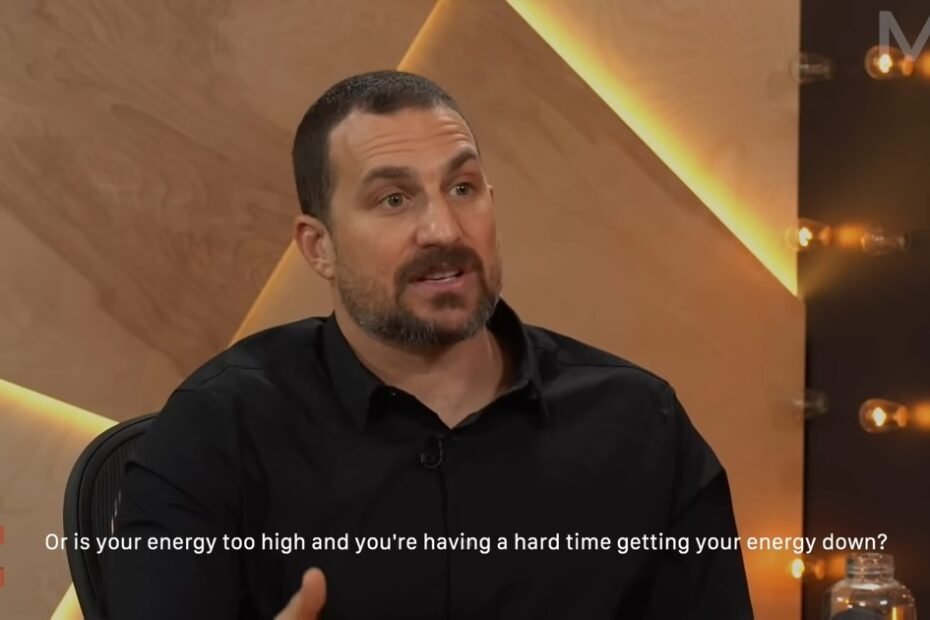NEUROSCIENTIST: You will never be stressed again Dr. Andrew Huberman
Mastering the Mind-Body Connection: Strategies for Stress and Trauma
In the relentless pace of modern life, stress has become a ubiquitous adversary, often leading to a state of heightened alertness and agitation that can be detrimental to our well-being. It is crucial for individuals to take control of their minds and bodies, to mitigate the so-called stress response. Understanding whether you need to ramp up your energy or dial it down is the first step in navigating stress and trauma effectively. The solutions to these contrasting states are often quite different, and recognizing which one you’re experiencing is key to finding relief.
The Elusive Task of Controlling the Mind
Attempting to control the mind with the mind itself can be likened to trying to grasp fog—it’s an exercise in futility. The nervous system, encompassing the brain and its extensive connections to the body, requires a more tangible approach. When mental efforts fail, it’s time to resort to mechanical actions. Trauma, anxiety, and fears are all rooted in stress, and while stress can exist without trauma, trauma cannot exist without stress and anxiety. Trauma is essentially a fear or stress response that occurs at inappropriate times, persisting long after the triggering event and complicating life significantly.
Combatting Fatigue and Overwhelm
On the flip side, when overwhelmed and fatigued, there are two main avenues to explore. The first is addressing the foundation of fatigue, which is often linked to poor sleep and sleep scheduling. Improving sleep quality is a process in itself, but it’s not a quick fix for immediate exhaustion. When you need to be alert and engaged in real-time, the goal is to inject more alertness into your system. This can be achieved by leveraging the direct relationship between breathing patterns and heart rate, a well-established medical fact known to all medical professionals.
The Power of Breath to Regulate Heart Rate
When we inhale, our diaphragm moves downward, enlarging the heart and slowing blood flow. This triggers a neural signal to the brain, which then instructs the heart to speed up. Conversely, exhaling causes the diaphragm to move upward, reducing the heart’s volume and prompting the brain to slow the heart rate. To become more alert, one can simply inhale more vigorously or prolong the inhalation, which increases the heart rate. For relaxation, longer or more forceful exhales will decelerate the heart rate and induce calmness.
Training for Top-Down Control
Repetitive breathing techniques, such as quick and deep breaths, can raise the heart rate and trigger the adrenal glands to release adrenaline, enhancing alertness. Initially, this may cause agitation, but with practice, one can learn to remain calm even as the body is flooded with adrenaline. This is a form of top-down control, where the conscious mind overrides the body’s instinctive urge to react. Whether it’s through controlled breathing patterns or enduring the shock of an ice bath, these practices teach the mind to maintain composure despite the body’s distress signals.
Embracing the Hour of Pain for Mental Fortitude
Another method for cultivating top-down control is the ‘Hour of Pain,’ a practice described by a former military Special Operations individual. This exercise involves remaining in one position for an hour, creating immense limbic friction as the body’s stabilizing muscles and musculoskeletal system scream for movement. Like the ice bath, this practice is about learning to suppress the urge to react physically, reinforcing mental discipline and control.
The Art of Relaxation and Mental Stillness
Conversely, practices aimed at relaxation, such as long exhale breathing while lying down, can help turn off the mind’s incessant chatter. This technique involves completely relaxing the body and quieting the mind, a skill that can be quickly learned with consistent practice. By dedicating just 10 minutes a day to this practice, one can achieve a state of profound mental stillness and tranquility, counteracting the effects of stress and trauma.
Conclusion
Understanding and managing the mind-body connection is essential in our quest to navigate the complexities of stress and trauma. Whether it’s through controlled breathing to modulate heart rate, enduring the ‘Hour of Pain,’ or mastering the art of relaxation, these strategies offer powerful tools for achieving balance and resilience. By learning to control our physiological responses and mastering top-down control, we can face life’s challenges with a newfound sense of calm and empowerment.
![]()
